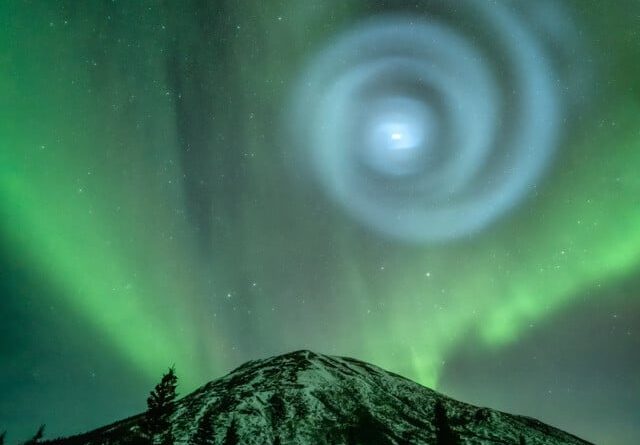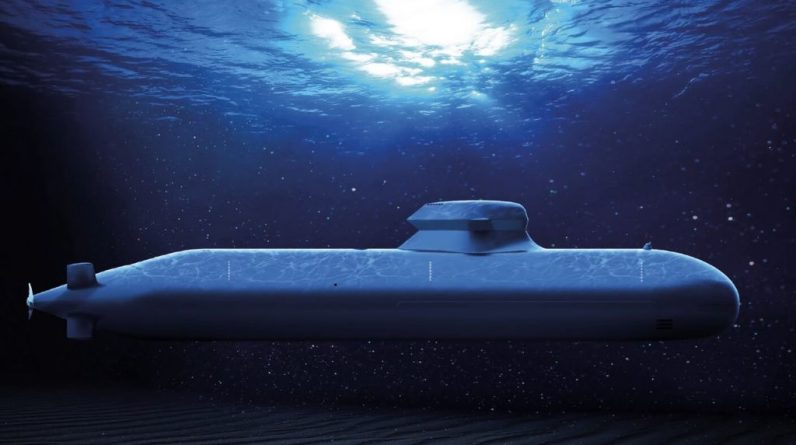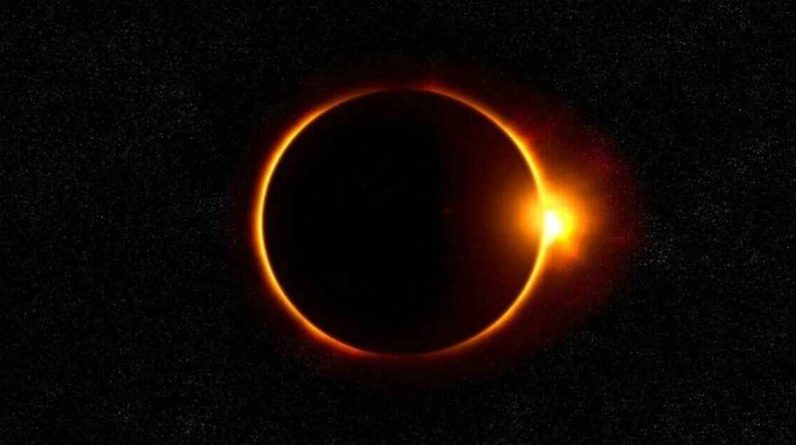
A light blue spiral similar to a galaxy emerged within the aurora for a brief period in the skies of Alaska, close to Fairbanks. The spiral pattern came into existence as surplus fuel, discharged by a SpaceX rocket that had been launched from California around three hours earlier, solidified into ice. Later, when the ice turned into water vapor, it reflected sunlight in the upper atmosphere, producing the striking spiral shape.’
On a recent night in Alaska, viewers of the Northern Lights were treated to a rare and unexpected sight: a delicate, light blue spiral that looked like a galaxy. While the aurora borealis is a common and breathtaking sight in the region, the appearance of the blue spiral was truly unique. The spiral was created by an unusual combination of events – excess fuel released by a SpaceX rocket that had been launched hours earlier from California turned to ice and then water vapor, which reflected the sun’s light in the upper atmosphere. This created the striking spiral shape that appeared among the familiar green bands of light. The beauty and unpredictability of nature never cease to amaze us, and this stunning display is a testament to that.
Despite initial speculation that the appearance of a light blue spiral in the Alaskan skies on Saturday morning might have been a sign of extraterrestrial activity, the actual explanation for the phenomenon turned out to be much more down-to-earth. As it turns out, the spiral was caused by a rather mundane event: excess fuel that had been released from a SpaceX rocket launched from California approximately three hours earlier. The fuel had turned to ice and later vaporized, creating the spiral shape that caught the attention of Northern Lights enthusiasts. While the explanation may not be as exciting as some had hoped, it’s a reminder that even the most captivating natural phenomena can often be explained by simple scientific principles.
According to Don Hampton, a space physicist and research associate professor at the University of Alaska Fairbanks Geophysical Institute, rockets may occasionally need to release excess fuel, which is known as jettisoning.
Don Hampton, a space physicist and research associate professor at the University of Alaska Fairbanks Geophysical Institute, explained that when excess fuel is released from rockets at high altitudes, it can freeze and turn into ice. If the ice happens to catch the sunlight, it can appear as a large cloud with a swirling pattern visible from the ground at night.
Although not a common occurrence, Don Hampton, a space physicist and research associate professor at the University of Alaska Fairbanks Geophysical Institute, has witnessed similar events about three times.
The spiral in Alaska was captured in a time-lapse video by the Geophysical Institute’s all-sky camera and shared widely on the internet. Northern lights photographers also shared their pictures on social media.
The SpaceX rocket carrying approximately 25 satellites as its payload took off from Vandenberg Space Force Base in California on Friday night in a polar launch, which made it visible over a large part of Alaska.
The timing of the fuel dump was planned to coincide with visibility over Alaska, resulting in the striking spiral pattern. Although it appeared to resemble a galaxy, Hampton confirmed that it was just water vapor reflecting sunlight and not an extraterrestrial phenomenon.
Another spiral was captured in January over Hawaii’s Big Island, which researchers have attributed to the launch of a military GPS satellite by a SpaceX rocket from Florida.






